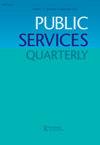比较美国公共图书馆和学术图书馆的医疗应急准备
Q3 Social Sciences
引用次数: 0
摘要
本研究旨在确定美国公共和学术图书馆提供了哪些医疗急救资源和培训,公共和学术准备如何比较,以及哪些原因可能导致不采用。对来自65家图书馆的调查反馈进行了分析,包括自动电子除颤器(aed)、纳洛酮、肾上腺素、心肺复苏(CPR)培训和心理健康危机培训等五种干预措施的可获得性、计划获得或不获得的原因。调查结果显示,这些干预措施并不一定常见——41.5%的受访者没有提供五种干预措施中的任何一种,而最常见的AED在52.3%的图书馆中提供。aed和肾上腺素在学术图书馆更常见,但纳洛酮、心肺复苏术培训和心理健康危机培训在公共图书馆更常见。不采取医疗干预措施的主要原因包括其他应急响应方案、成本、对法律责任的担忧,以及认为这超出了图书馆的职责范围。讨论了图书馆规划的含义和考虑因素。本文章由计算机程序翻译,如有差异,请以英文原文为准。
Comparing medical emergency preparedness in U.S. public and academic libraries
Abstract This study sought to determine what medical emergency resources and training are provided in U.S. public and academic libraries, how public versus academic preparedness compares, and what reasons may contribute to decisions against adoption. Survey responses from 65 libraries were analyzed regarding availability of, plans to acquire, or reasons for not acquiring five interventions—automatic electronic defibrillators (AEDs), naloxone, epinephrine, cardiopulmonary resuscitation (CPR) training, and mental health crisis training. Findings showed that these interventions were not necessarily common—41.5% of respondents offered zero of the five interventions, while the most common, AED, was available in 52.3% of libraries. AEDs and epinephrine were somewhat more common in academic libraries, but naloxone, CPR training, and mental health crisis training were more common in public libraries. Primary reasons for not adopting medical interventions included alternative emergency response options, cost, concerns regarding legal liability, and the sense that this is outside the scope of a library’s duties. Implications and considerations for library planning are discussed.
求助全文
通过发布文献求助,成功后即可免费获取论文全文。
去求助
来源期刊

Public Services Quarterly
Social Sciences-Library and Information Sciences
CiteScore
0.90
自引率
0.00%
发文量
38
期刊介绍:
Public Services Quarterly covers a broad spectrum of public service issues in academic libraries, presenting practical strategies for implementing new initiatives and research-based insights into effective practices. The journal publishes research-based and theoretical articles as well as case studies that advance the understanding of public services, including reference and research assistance, information literacy instruction, access and delivery services, and other services to patrons. Articles may examine creative ways to use technology to assist students and faculty. Practice-based articles should be thoroughly grounded in the literature and should situate the work done in one library into the larger context of the situation.
 求助内容:
求助内容: 应助结果提醒方式:
应助结果提醒方式:


